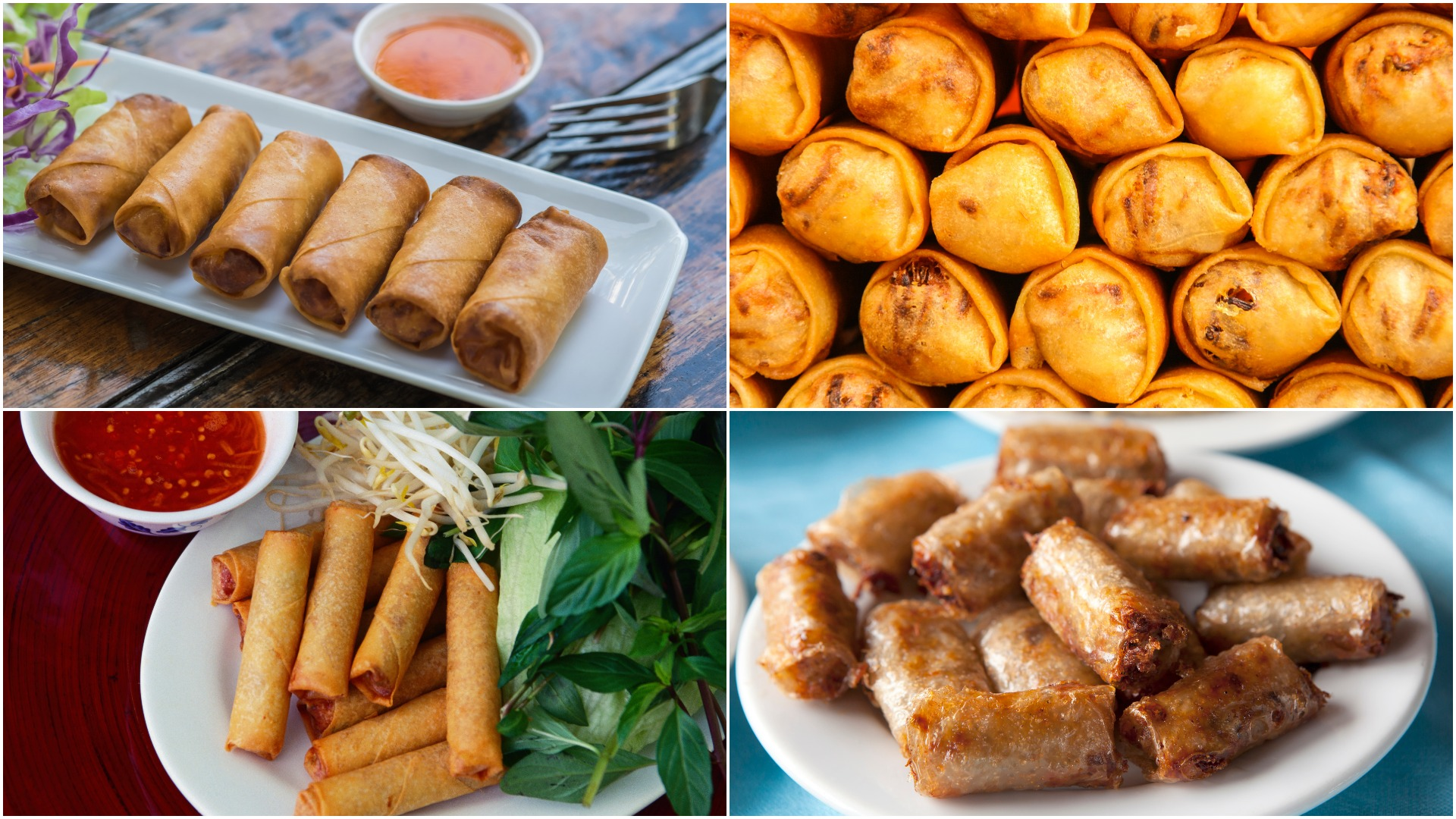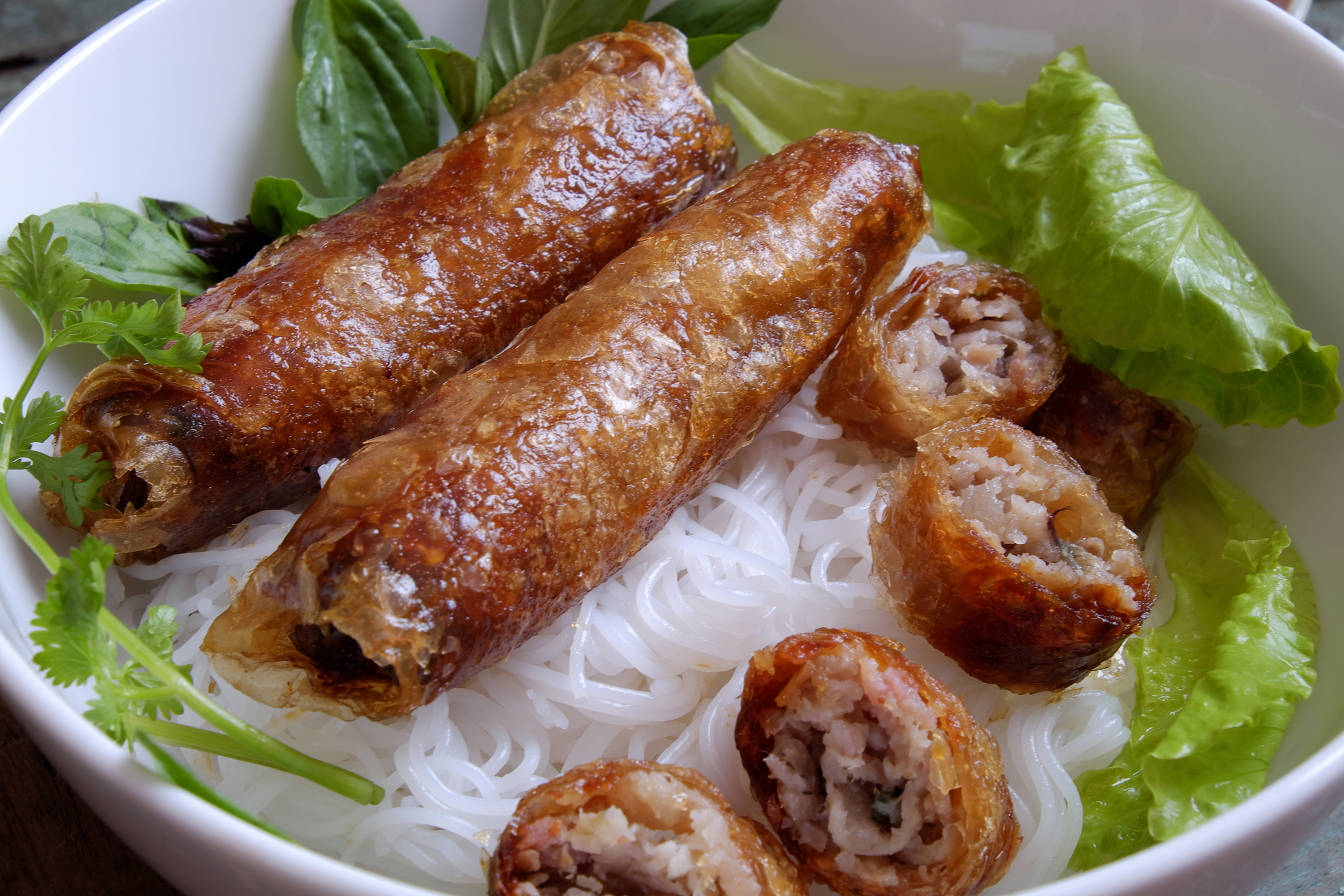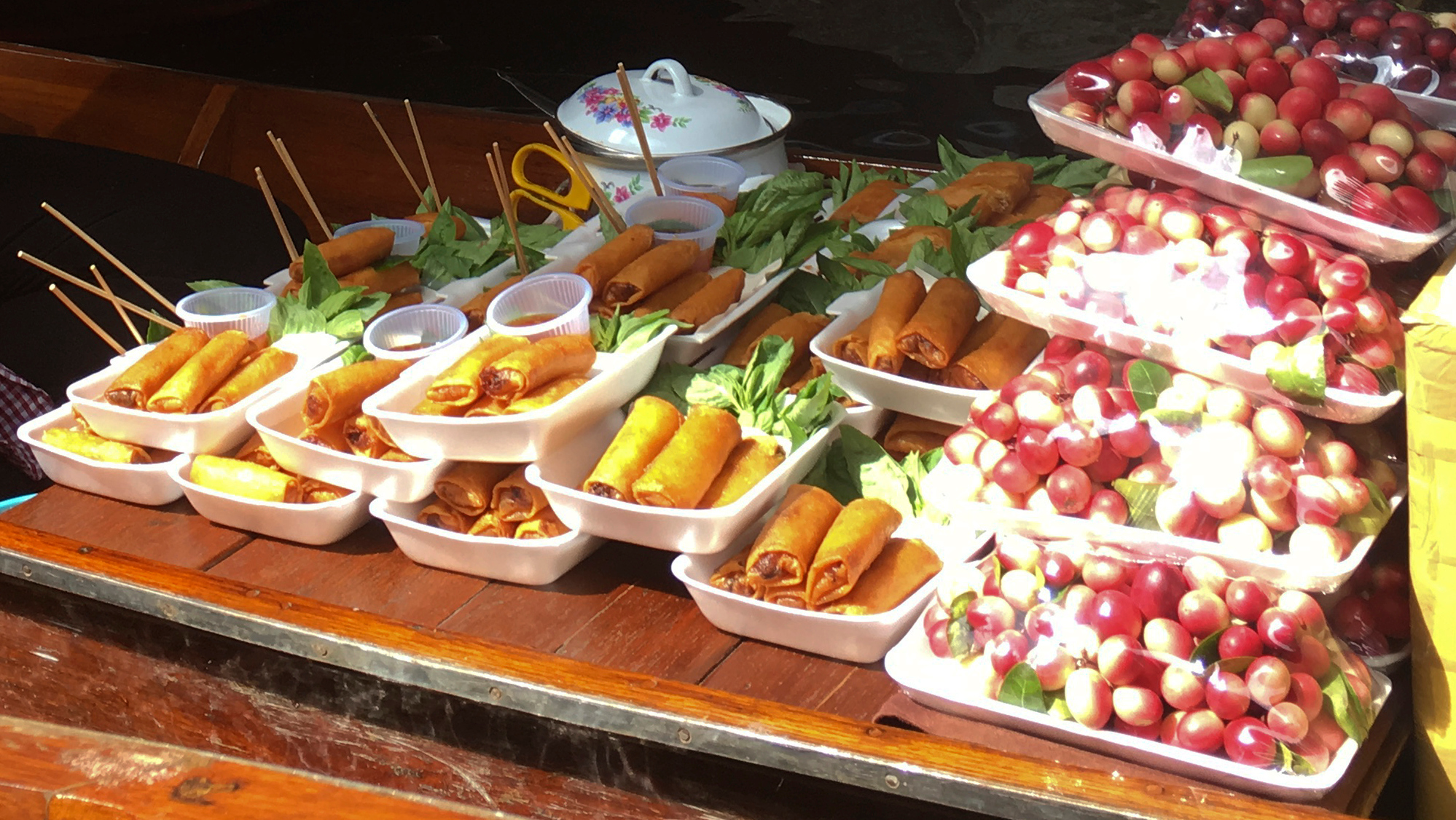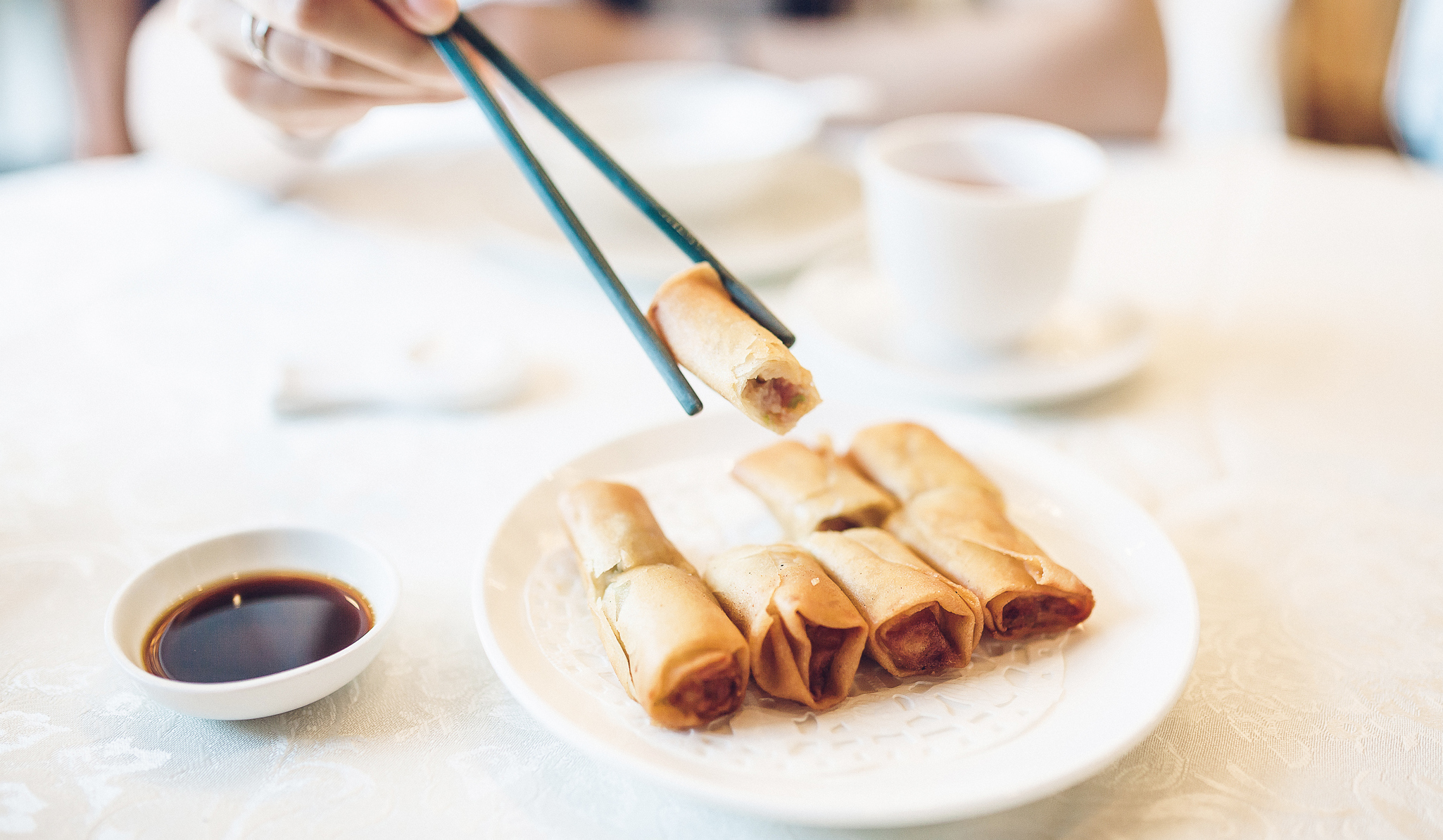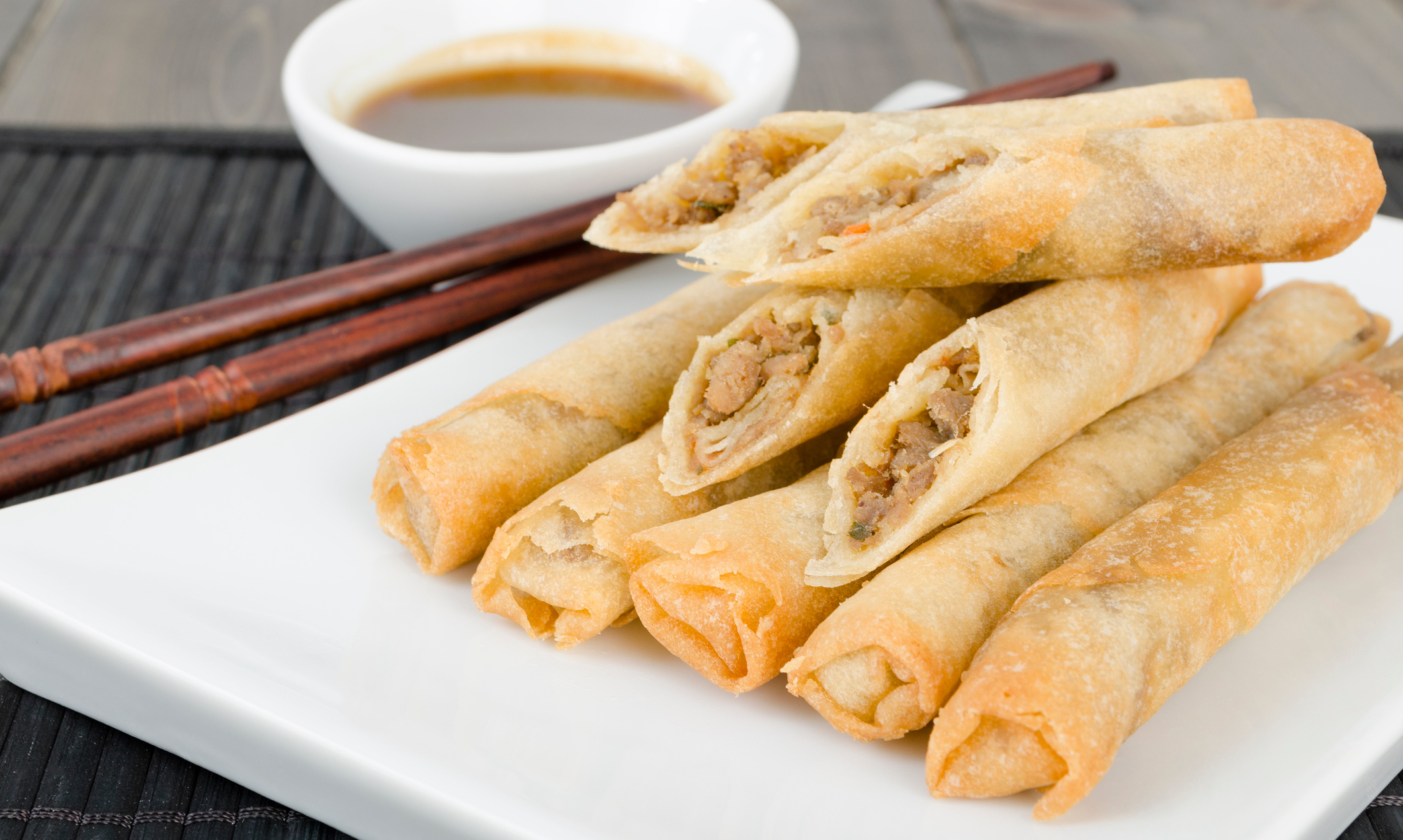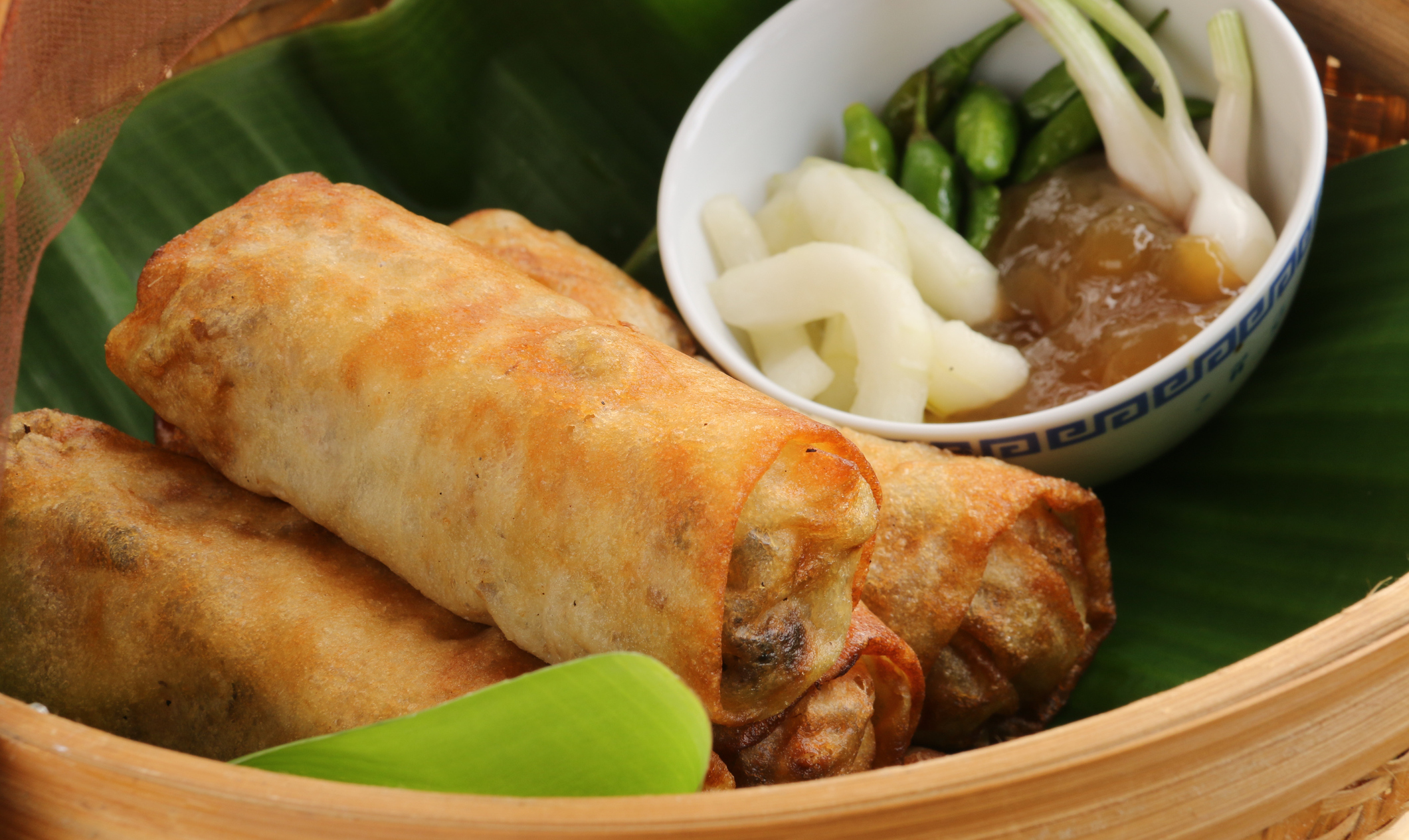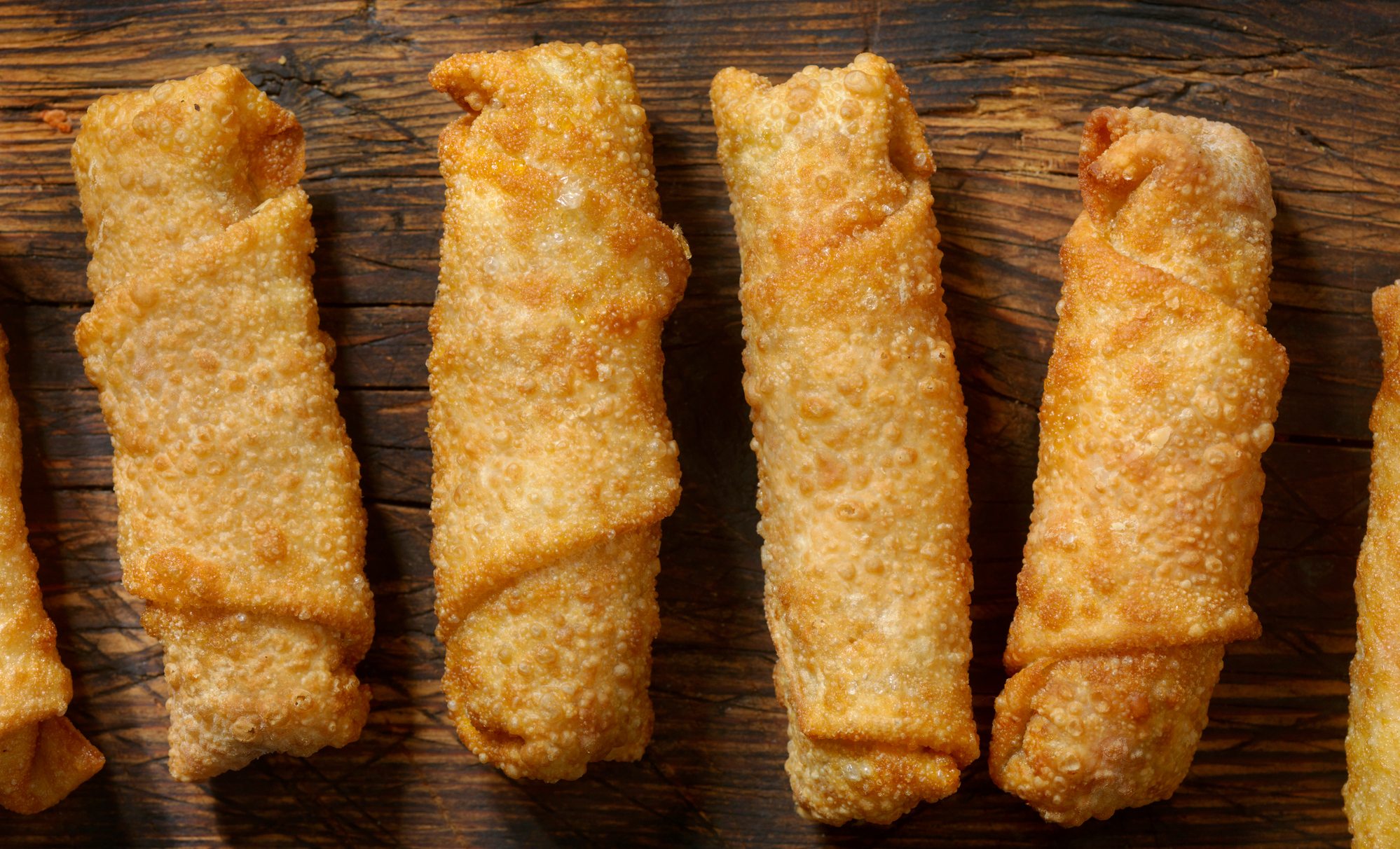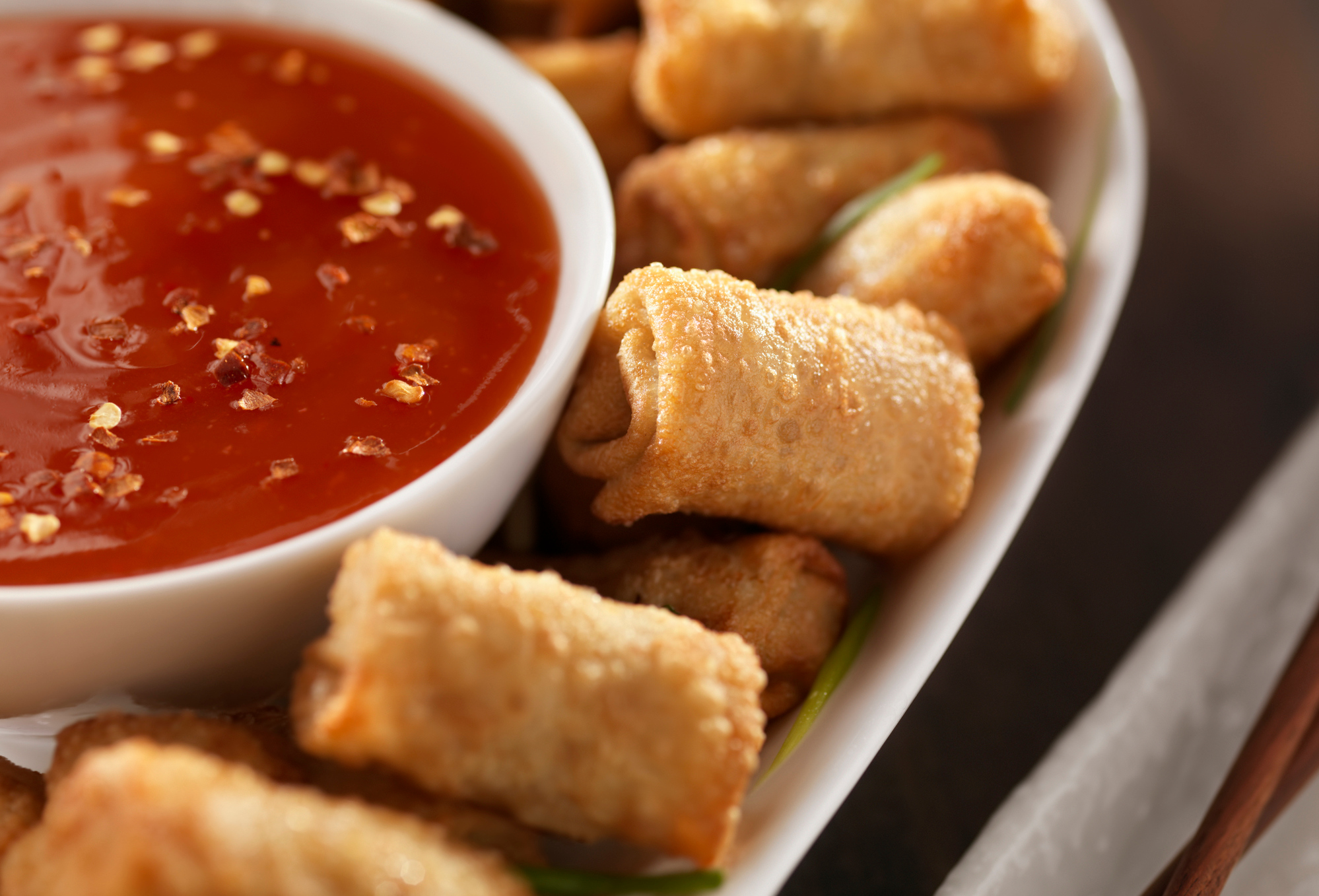Everything You Need To Know About Asian Egg Rolls
Imagine if you ordered fried chicken at a restaurant, were so excited and confident you had ordered the right thing, could almost taste its deliciousness, and when the dish arrived it was poached scrod. And you had no one to blame but yourself. This great disappointment is akin to my recent experience of trying to order crispy deep fried "egg rolls" in a Vietnamese restaurant, and instead got cold, watery, leafy summer rolls. It was a tragic case of getting lost in translation. When they arrived, sadness descended upon the table. I rolled through the stages of grief, from denial "This is not what I ordered!" (it was), to anger, to bargaining ("okay if I eat two of these sticky cold ones, then I will deserve to get the right kind next time"), all the way to acceptance and self-loathing. This had to stop.
Before me was an opportunity to dive into the world of what Americans called egg rolls—and elsewhere as spring rolls, lumpia, cha gio, and the like. I've been a lifelong fan of any deep-fried, roll-shaped appetizer with a shatteringly crisp encasement. It almost doesn't matter what's inside: Bean thread noodles, cabbage, pork bits, sprouts, chicken—all are welcome. The egg rolls I grew up with were dense and thick, a crisp pock-marked exterior, ideal for dunking in neon red takeout sauce. But as my palate expanded, I discovered that there was indeed a world of egg rolls, beaming outward from Southeast Asia, and each had its own trait and idiosyncrasies. And all are delicious.
Cha Gio (Vietnam)
Small crispy rolls, traditionally containing a mix of seafood, mushrooms, pork and cellophane noodles. The wrapper can be made of rice flour, or a blend of rice and tapioca flours. In her book Into The Vietnamese Kitchen, Andrea Nguyen says cha gio are often mistakenly labeled as spring rolls, as they resemble the popular Cantonese style, but they are a Vietnamese dish through and through. Served by itself or atop rice noodles (bun cha gio) the hallmark with cha gio is the addictively sweet, tart, and savory dipping sauce that accompanies, called nuoc cham—made with fish sauce, lime juice, and sugar. Nguyen notes that nuoc cham is region-specific and the sauce may contain more sugar, chilies and garlic as you head further south.
Popia Thot (Thailand)
Thai egg rolls were one of my favorite street snacks during my visit to Bangkok. Inspired by Cantonese spring rolls and cha gio, the Thai popia thot are, anatomically, not that different from its Chinese and Vietnamese cousins. In Leela Punyaratabandhu's book Simple Thai Food, she writes that the fillings of these rolls will differ from cook to cook, but most commonly you'll find glass noodles, bean sprouts, and wood ear mushrooms inside. A sweet chili garlic sauce is the ideal accompaniment.
Spring Roll (Hong Kong)
An obligatory pick at any dim sum parlor. Filled with pork, shrimp, bean sprouts, and cabbage, Cantonese spring rolls have an exceptionally smooth and crispy exterior. The ladies who serve you spring roll at a dim sum restaurant will often snip these in half at the table for easier consumption. Though you'll find these accompanied with a sweet-and-sour sauce, the Cantonese love dipping their spring rolls in Worcestershire sauce.
Lumpia Shanghai (The Philippines)
Filled with ground pork or beef and vegetables, Filipino lumpia are generally skinnier and longer than its egg roll counterparts—like a classy cigarillo. Personally, I find this crisp surface area-to-interior filling makes for a far crispier egg roll experience. Banana ketchup is a popular dipping sauce for lumpia.
Lumpia Semarang (Indonesia)
Indonesia is the world's most populous Muslim nation, so unlike other Asian egg rolls, pork is not a filling you'll find in the Indonesia lumpia Semerang. Chicken and shrimp are the proteins of choice, and because of its abundance, bamboo shoots are used quite a lot. These can be served with a chili sauce, or with kecap manis, the viscous and sweet soy sauce found in many Indonesian dishes.
Egg Rolls (USA)
As is the American way, egg rolls are larger, fatter, more bulbous than anywhere else. What's most distinct about these is the doughy wrapper—thicker than its Asian counterparts, and deep fried to a bumpy, blistered exterior. After it's stuffed with the filling, they're about the size of a toilet paper cardboard roll. Call it ingenuity or insanity, but the seemingly infinite range in filling (from Philly cheesesteak to "Southwest" to peanut butter in some Chicago restaurants) is what makes the American egg roll like America itself—a true melting pot.
According to Andrew Coe, in his book Chop Suey: A Cultural History of Chinese Food in the the United States, the original egg roll was claimed to be invented by a New York cook in the 1930's named Lum Fung, whose invention proved to fit the American profile, however incorrect, of what Chinese food was: filling but bland. Hence the sampler of sauces often accompanying it: duck sauce or plum sauce, sweet and sour sauce, soy sauce and hot mustard.
Bonus: Baby Egg Rolls!
Does everyone have access to baby egg rolls? I sure hope so. Our neighborhood Thai restaurant had them on their delivery menu and my sister and I always got them. These egg rolls are the size of a fat toe, with very little filling—but that's not an issue, because the point is it's mostly crispy deep-fried exterior. What's better: stuffing several in your mouth at once, because I love life.
